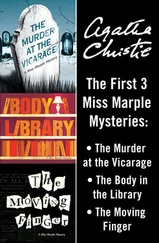Robert Monroe - Journeys out of the body, Practical Guidebook
Здесь есть возможность читать онлайн «Robert Monroe - Journeys out of the body, Practical Guidebook» весь текст электронной книги совершенно бесплатно (целиком полную версию без сокращений). В некоторых случаях можно слушать аудио, скачать через торрент в формате fb2 и присутствует краткое содержание. Жанр: Старинная литература, на английском языке. Описание произведения, (предисловие) а так же отзывы посетителей доступны на портале библиотеки ЛибКат.
- Название:Journeys out of the body, Practical Guidebook
- Автор:
- Жанр:
- Год:неизвестен
- ISBN:нет данных
- Рейтинг книги:5 / 5. Голосов: 1
-
Избранное:Добавить в избранное
- Отзывы:
-
Ваша оценка:
- 100
- 1
- 2
- 3
- 4
- 5
Journeys out of the body, Practical Guidebook: краткое содержание, описание и аннотация
Предлагаем к чтению аннотацию, описание, краткое содержание или предисловие (зависит от того, что написал сам автор книги «Journeys out of the body, Practical Guidebook»). Если вы не нашли необходимую информацию о книге — напишите в комментариях, мы постараемся отыскать её.
Journeys out of the body, Practical Guidebook — читать онлайн бесплатно полную книгу (весь текст) целиком
Ниже представлен текст книги, разбитый по страницам. Система сохранения места последней прочитанной страницы, позволяет с удобством читать онлайн бесплатно книгу «Journeys out of the body, Practical Guidebook», без необходимости каждый раз заново искать на чём Вы остановились. Поставьте закладку, и сможете в любой момент перейти на страницу, на которой закончили чтение.
Интервал:
Закладка:
If a practitioner experiences difficulty falling asleep and is constantly awake while performing direct techniques, then the most comfortable position for the individual should be used.
If sleep comes quite easily to a practitioner, a less natural position should be taken. If a practitioner experiences fewer gaps in consciousness when the techniques are performed and has a harder time falling asleep, a more comfortable a position should be used.
Depending on the situation, there are many possible positions: lying down on the back, on the stomach, on the side, or even in a half-
reclined position. It is possible that a practitioner will have to change positions from one attempt to another, introducing adjustments related to a free-floating state of mind.
RELAXATION
By nature, one should clearly understand that direct techniques are in and of themselves relaxation methods, inasmuch as no phase can occur without one being relaxed. Accordingly, one can go immediately into the phase without any prior relaxation.
Since the most effective window of time for using direct techniques occurs before sleep and at night, and lasts only 10 to 20
minutes in any case, additional time should not be wasted on trying to relax, nor should time for relaxation be subtracted from the requisite 10 to 20 minutes.
Correct and quality relaxation is a difficult pursuit and many go about it individually, producing an opposition to natural relaxation.
For example, many endeavor to relax their bodies to such a degree that in the end the mind is as active as it would be while trying to solve a difficult mathematical equation. In this type of situation, entering the phase is impossible.
The body automatically relaxes when the mind is relaxed. The body, in turn, will never relax if the mind is active. Therefore, it is better for beginners refrain from the trouble of the nuances of relaxation and save their energies for more elementary matters.
Instead of forcing a technical relaxation, a practitioner should simply lie down for several minutes and this will provide the best relaxation. Lying down activates natural relaxation processes; the most powerful kind.
Complete, peaceful relaxation may only be coerced by those with specialized, in-depth experience. Generally, these are people who have spent a great amount of time and effort mastering trance and meditative states. Relaxation in these cases should take no more than 1 to 3 minutes and no longer as because when a practitioner is expert at relaxation it is sufficient to just think about it, and it occurs.
All quality relaxation techniques may well serve as direct techniques, if a free-floating state of mind occurs while they are exercised. After gaining the necessary experience with trance and meditation, a practitioner of these mental arts may proceed to mastering the phase.
VARIATIONS OF USING
DIRECT TECHNIQUES
Techniques used to gain direct entrance to the phase are exactly the same as those used during indirect attempts. The only difference is in the method of implementation. The techniques are described in detail in Chapter 2. However, since direct techniques mostly require passivity, not all techniques work equally well for both direct and indirect entries into the phase. For example, active techniques like straining the brain cannot be used to gain a smooth entrance into the phase.
Direct techniques differ from indirect techniques in their implementation because of the slow, halting production of results that occurs from the beginning of a direct attempt through the end of it. If upon awakening something happens to work, then this can practically always lead to entrance into the phase. For example, the same phantom wiggling before sleep can begin quickly enough, but range of movement will not be easy to increase, and the entire implementation of the technique will rely on protracted, rhythmic movement. Results take much longer: ten minutes instead of ten seconds. These differences also apply to every technique described in this guidebook.
Like the practice of indirect techniques, to begin the practice of direct techniques, a practitioner should choose 3 or 4 of the most suitable techniques from those that prove most effective to the individual. In order to assist the practitioner, a table has been provided, detailing the documented effectiveness of the direct techniques:
The Most Effective Direct Techniques at Seminars of the School of Out-of-Body Travel
Phantom Wiggling
15%
Rotation
15%
Listening in
15%
Vibrations (occurring amid the use of other 15%
techniques)
Observing Images
10%
Mixture of Techniques
10%
Simple separation (usually mixed in with other 10%
techniques)
Other Techniques
10%
The primary difference in working with direct techniques is the time that it takes to exercise each. If testing a specific indirect technique takes only 3 to 5 seconds, then in this case several minutes will be spent. Duration varies depending on certain factors.
There are three primary ways of performing the techniques: classical, sequencing, and cycling - similar to the cycling used with indirect techniques. To understand which variant should be used, consider the following table:
Variations of Using the
When to Use It
Techniques
Classical (passive) variation:
- when learning direct
One attempt of 1 technique. techniques;
The technique may be alternated
- when a practitioner generally
after each attempt.
sleeps poorly;
- if attempts lead to waking up;
- if attempts with other
variations occur without lapses in
consciousness;
- if the body and consciousness
are in a relaxed state;
Sequencing (middle):
- used if falling asleep occurs
One attempt with 2 to 3 while using the classical variation, techniques for 1 to 5 minutes. or if cycling results in becoming Techniques are alternated wide awake;
infrequently.
Aggression
- when a practitioner generally
fluctuates with the length of time falls asleep quickly; that the techniques are
performed.
Cycling (active):
- if the classical and sequencing
Algorithm of cycling 3 variations put one asleep; techniques like with indirect
- when one generally falls
entry to the phase, but asleep very quickly; performing each technique for 10
- can also be employed when
seconds to 1 minute, and not 3 to exhausted or sleep deprived; 5 seconds.
A practitioner should always begin with the classical variation, i.e.
using one technique over an entire attempt. Due to the unusual nature of the efforts involved, a beginner’s enthusiasm may sustain a completely alert state. Later, however, strong, prolonged lapses of consciousness into sleep may occur. Here, it may be necessary to increase the level of activity by transitioning to the sequencing variation.
Sequencing is the primary variation used for direct techniques because of its elasticity in application. It can be passive if over the course of 15 minutes when a practitioner alternates two techniques for five minutes. It may also be aggressive if used sequencing three techniques for one minute. Everything between these two extremes allows proper practice of the techniques and selection of the best variation to achieve a free-floating state of mind.
If falling off to sleep stubbornly occurs even with the active form of sequencing, then one should start cycling through indirect techniques, but performing each technique from 10 seconds to 1
Читать дальшеИнтервал:
Закладка:
Похожие книги на «Journeys out of the body, Practical Guidebook»
Представляем Вашему вниманию похожие книги на «Journeys out of the body, Practical Guidebook» списком для выбора. Мы отобрали схожую по названию и смыслу литературу в надежде предоставить читателям больше вариантов отыскать новые, интересные, ещё непрочитанные произведения.
Обсуждение, отзывы о книге «Journeys out of the body, Practical Guidebook» и просто собственные мнения читателей. Оставьте ваши комментарии, напишите, что Вы думаете о произведении, его смысле или главных героях. Укажите что конкретно понравилось, а что нет, и почему Вы так считаете.










